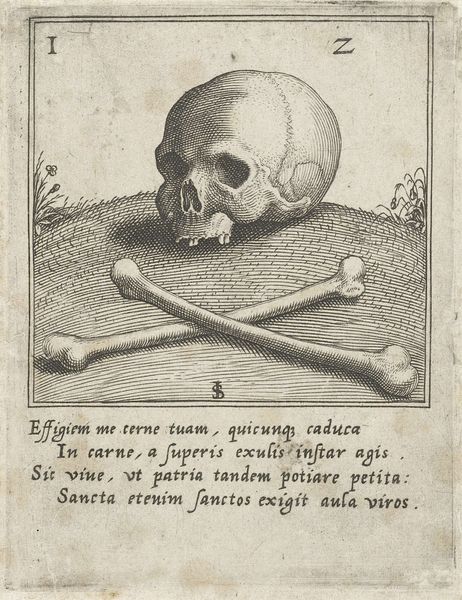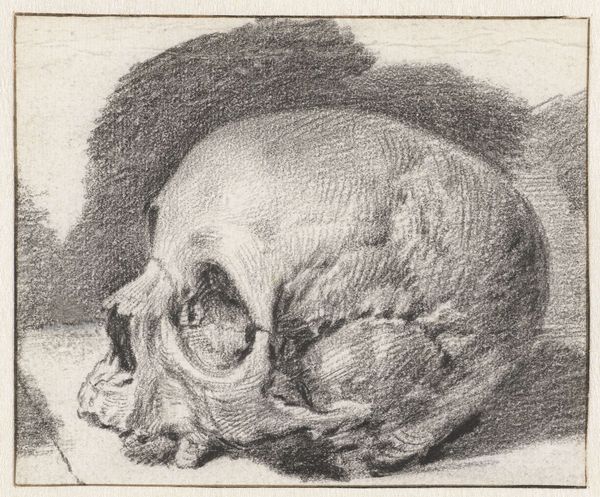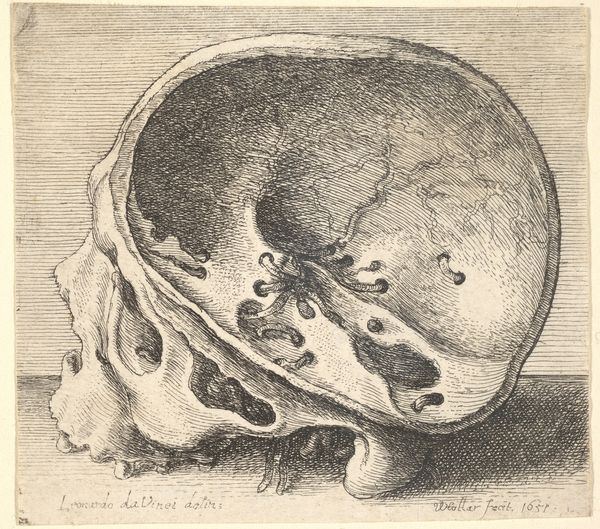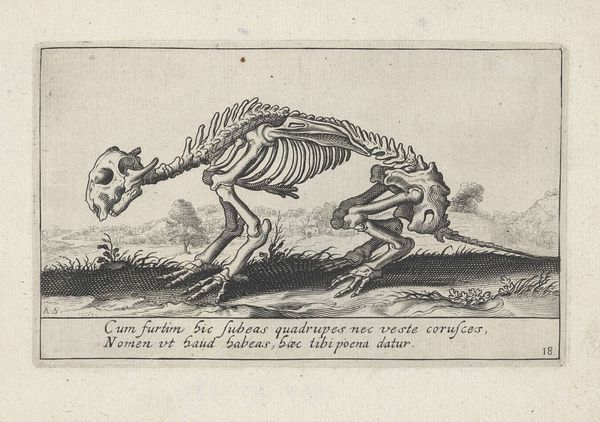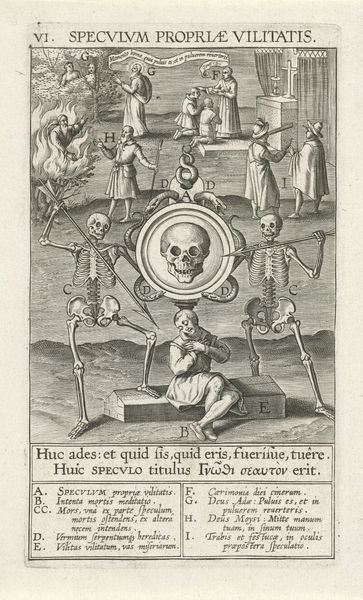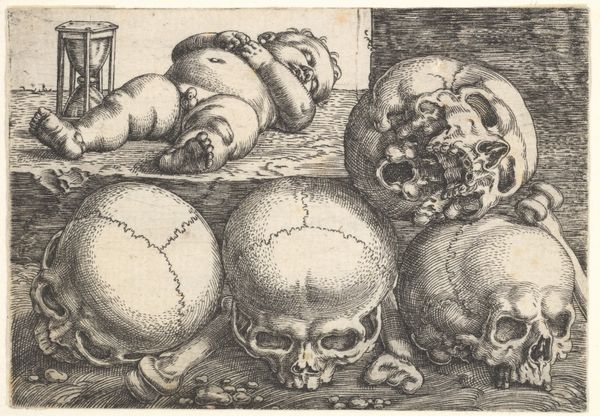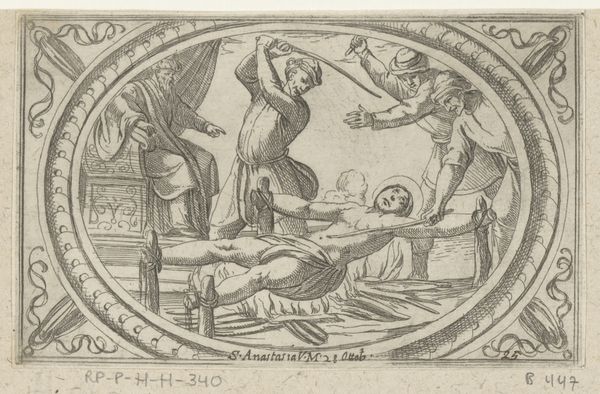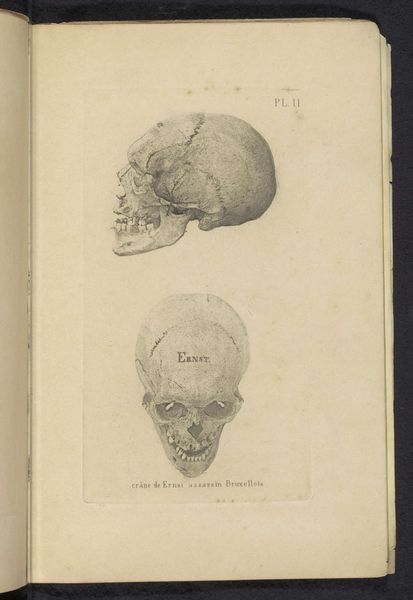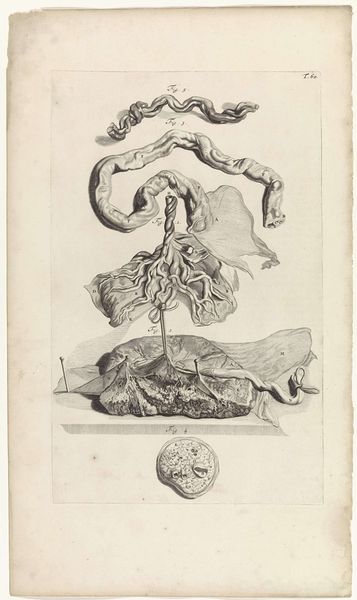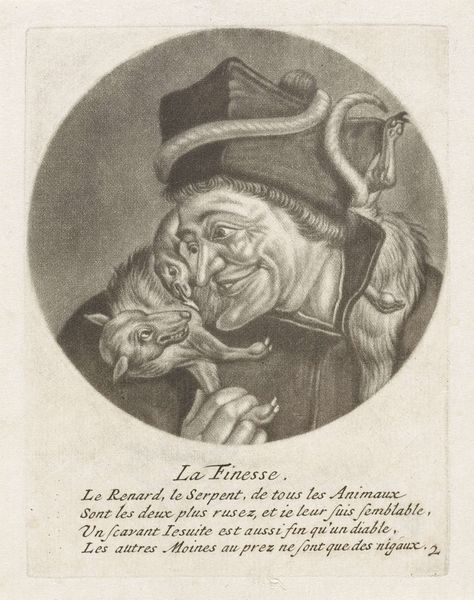
engraving
#
baroque
#
old engraving style
#
figuration
#
personal sketchbook
#
momento-mori
#
line
#
sketchbook drawing
#
engraving
Dimensions: height 49 mm, width 56 mm
Copyright: Rijks Museum: Open Domain
Editor: We're looking at "Skull and Bones," an engraving from 1652 by Wenceslaus Hollar, housed here at the Rijksmuseum. It's rather small, yet the image is quite striking and somber. How do you interpret this work through a formalist lens? Curator: Primarily, the focus resides on the compositional elements at play within the picture plane. Note the artist's masterful deployment of line; the intricate cross-hatching builds tonal depth and models the skull’s contours, creating a stark visual texture. What impact do you think this meticulous use of line has on the overall impact? Editor: It certainly emphasizes the textures and the fragility of the skull itself, I imagine it also emphasizes the temporality. The high contrast further intensifies the skeletal forms. Curator: Precisely. The stark contrast between light and shadow amplifies the formal geometry inherent in the subject matter. One must appreciate Hollar's deliberate arrangement of these fundamental components; these shapes command our attention, forcing contemplation upon our mortality. Consider also the orientation. The Skull is centered but turned which grants a visual rhythm and emphasizes symbolic weight without the symmetry being overt. Editor: It’s a strong reminder of mortality! This engraving reminds me that art can still speak powerfully across centuries. Curator: Precisely, although its somber. Through analyzing Hollar’s sophisticated rendering, use of line, and his compositional choices, we're granted a deeper appreciation of its visual construction.
Comments
No comments
Be the first to comment and join the conversation on the ultimate creative platform.
